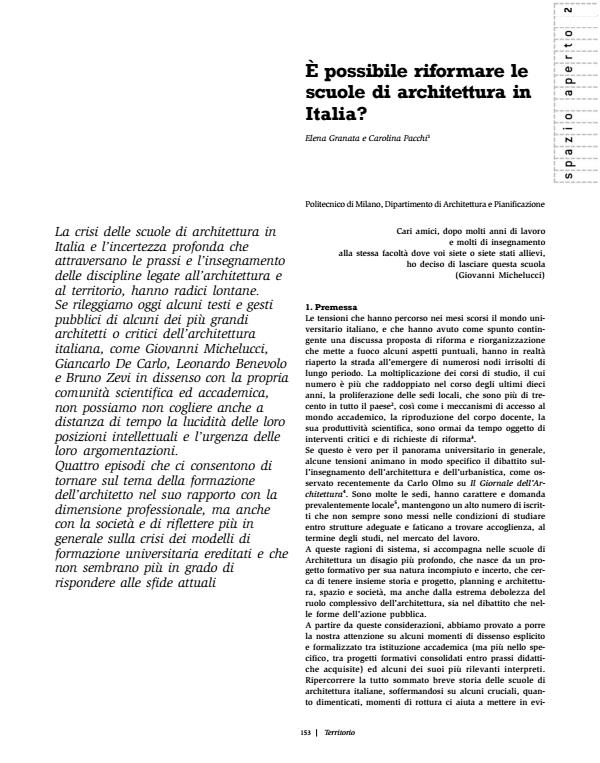È possibile riformare le scuole di architettura in Italia?
Journal title TERRITORIO
Author/s Elena Granata, Carolina Pacchi
Publishing Year 2009 Issue 2009/49 Language Italian
Pages 13 P. 153-165 File size 394 KB
DOI 10.3280/TR2009-049023
DOI is like a bar code for intellectual property: to have more infomation
click here
Below, you can see the article first page
If you want to buy this article in PDF format, you can do it, following the instructions to buy download credits

FrancoAngeli is member of Publishers International Linking Association, Inc (PILA), a not-for-profit association which run the CrossRef service enabling links to and from online scholarly content.
Is it possible to reform schools of architecture in Italy? - The crisis of architectural schools in Italy and the profound uncertainty running through practices and the teaching of architectural and planning disciplines has roots which date back a long time. If we re-read today some of the texts and public actions of some of the greatest Italian architects or critics of architecture such as Giovanni Michelucci, Giancarlo De Carlo, Leonardo Benevolo and Bruno Zevi, in dissent with the scientific and academic communities to which they belonged, it is hard not to grasp, with the benefit of hindsight, the lucidity of their intellectual positions and the urgency of their arguments. Four episodes are presented which allow us to return to the issue of training architects in their relationship with the professional dimension and also with society and to consider more generally the crisis of inherited models of university education, which no longer seem able to meet the challenges of today.
- Epistemological critiques to the technocratic planning model: the role of Jane Jacobs, Paul Davidoff, Reyner Banham and Giancarlo De Carlo in the 1960s Carolina Pacchi, in City, Territory and Architecture 17/2018
DOI: 10.1186/s40410-018-0095-3
Elena Granata, Carolina Pacchi, È possibile riformare le scuole di architettura in Italia? in "TERRITORIO" 49/2009, pp 153-165, DOI: 10.3280/TR2009-049023